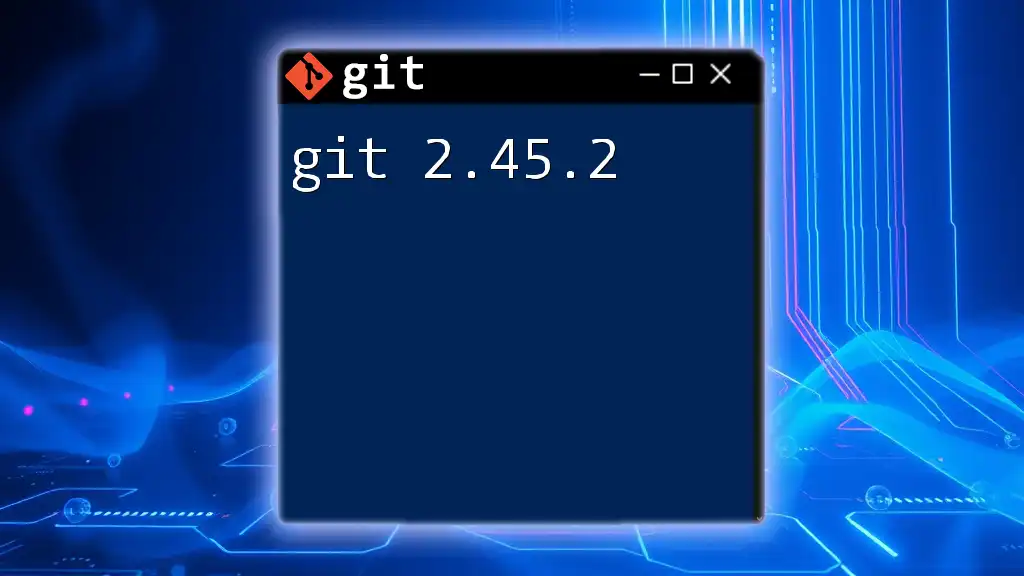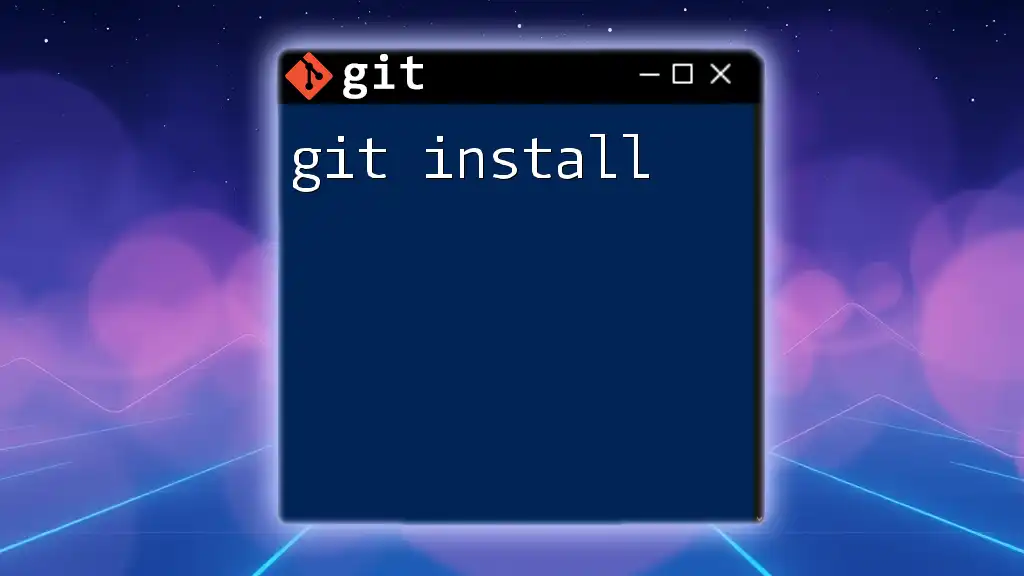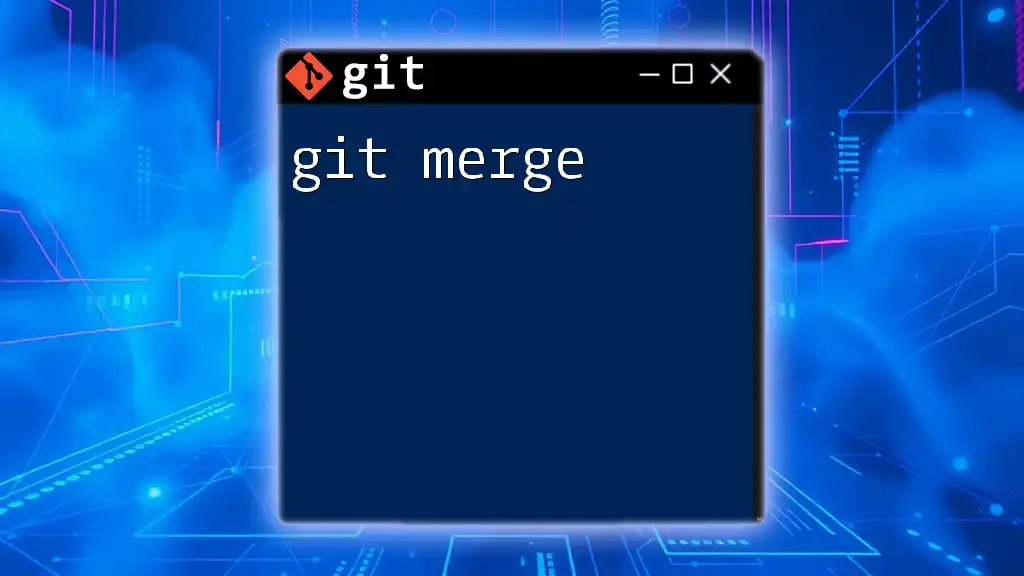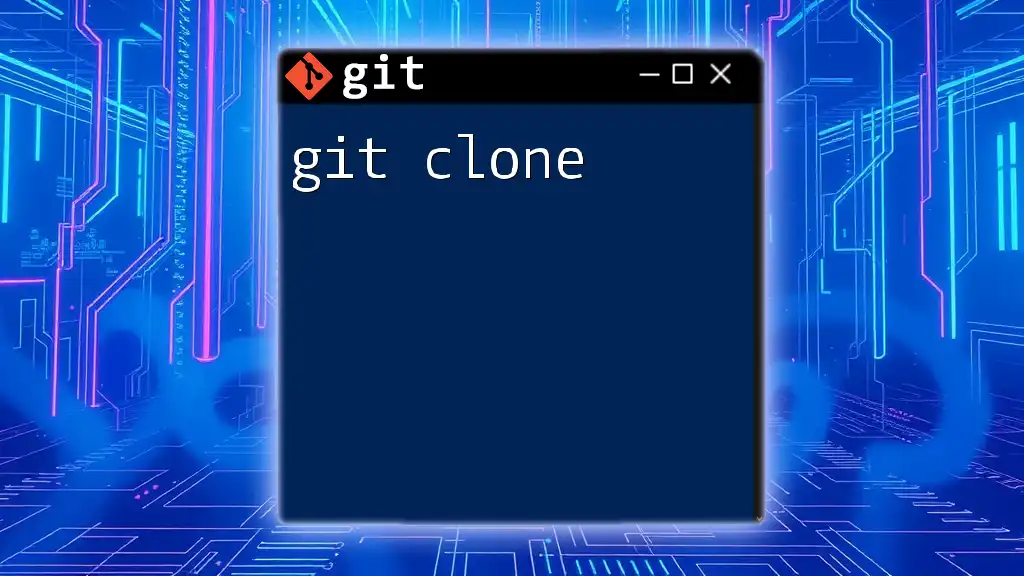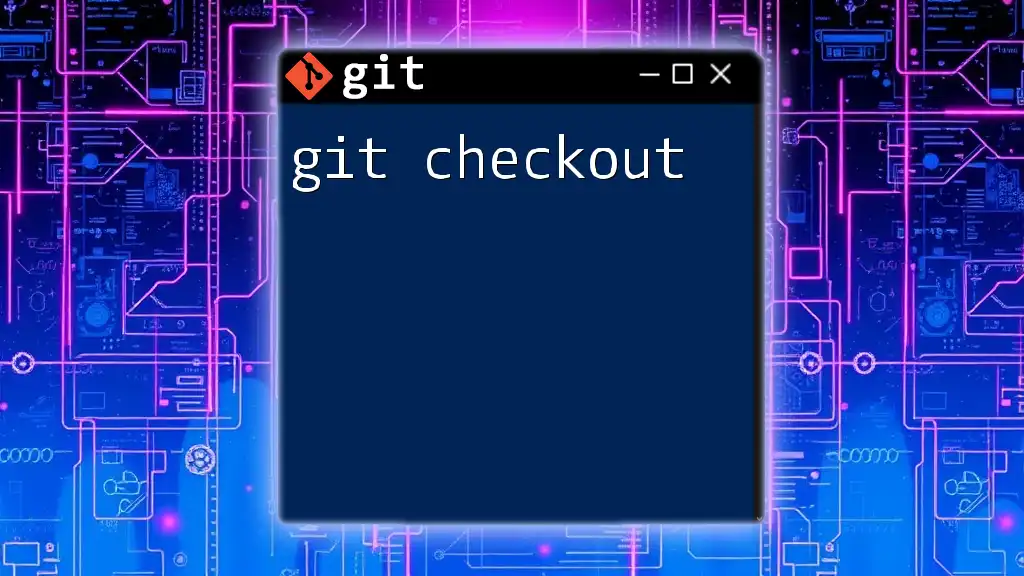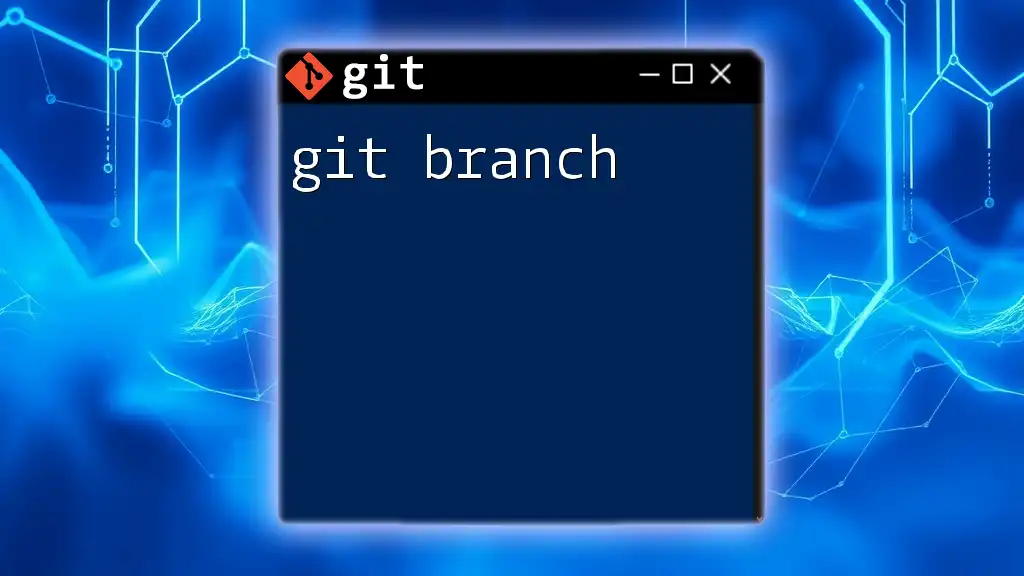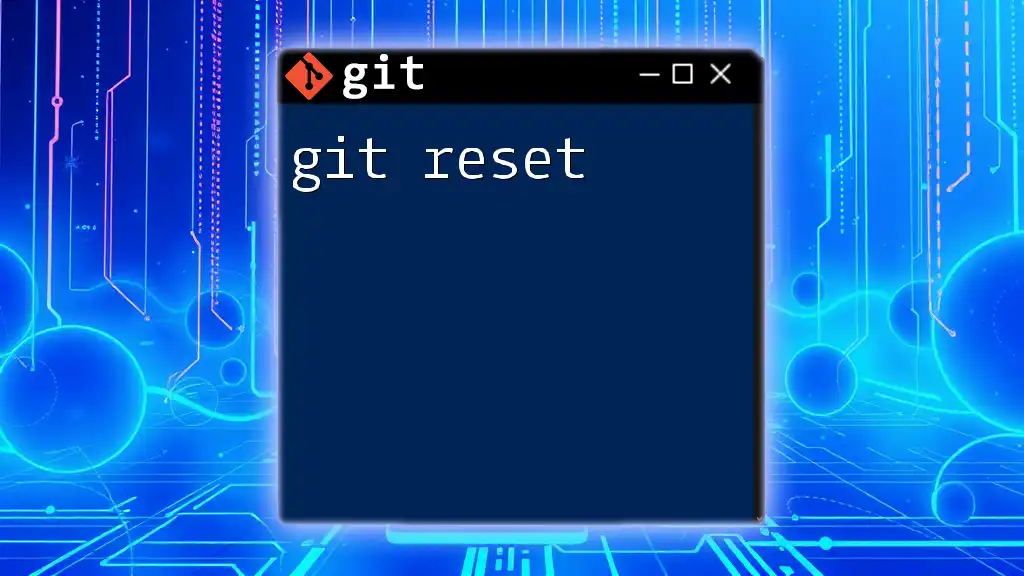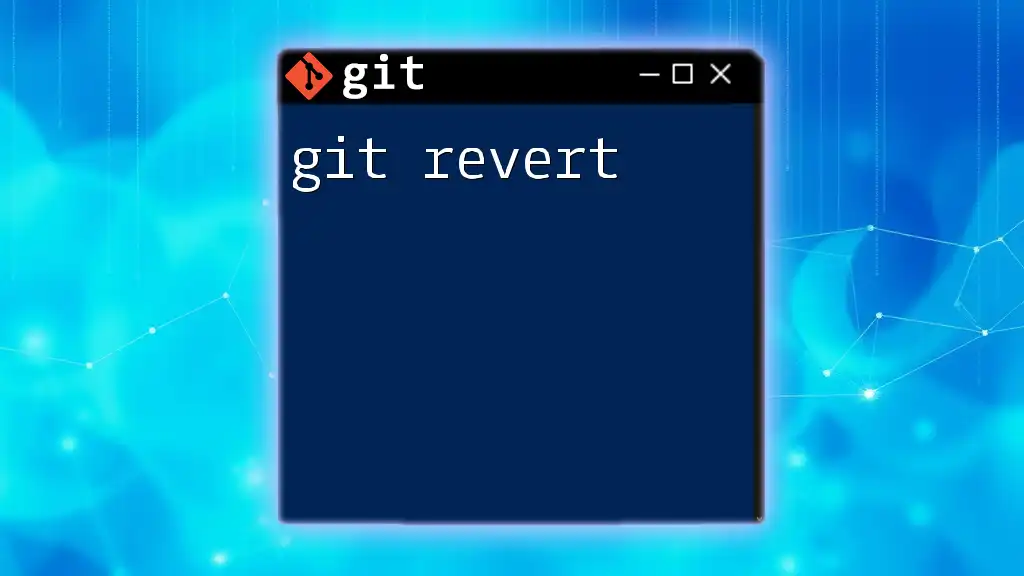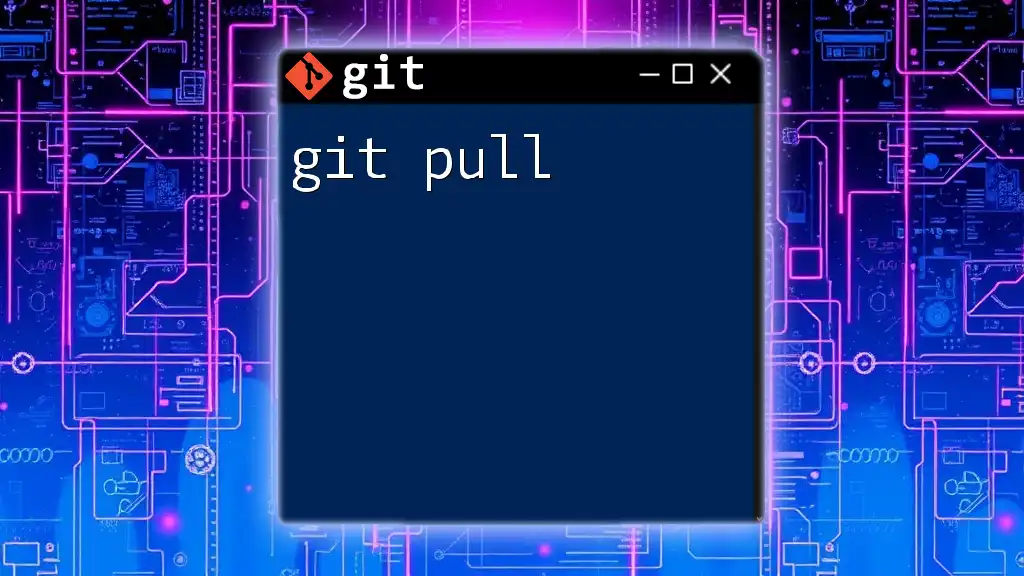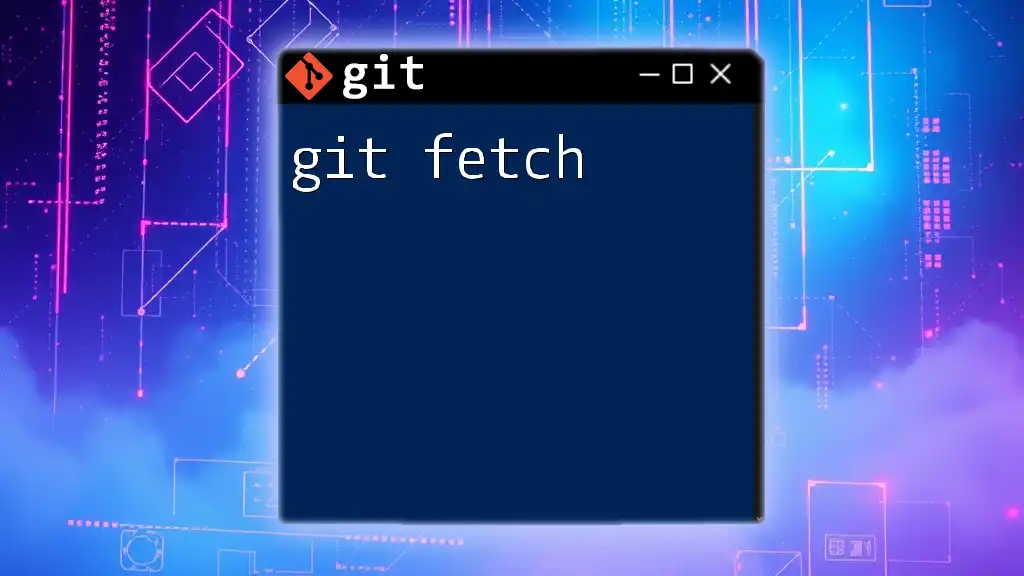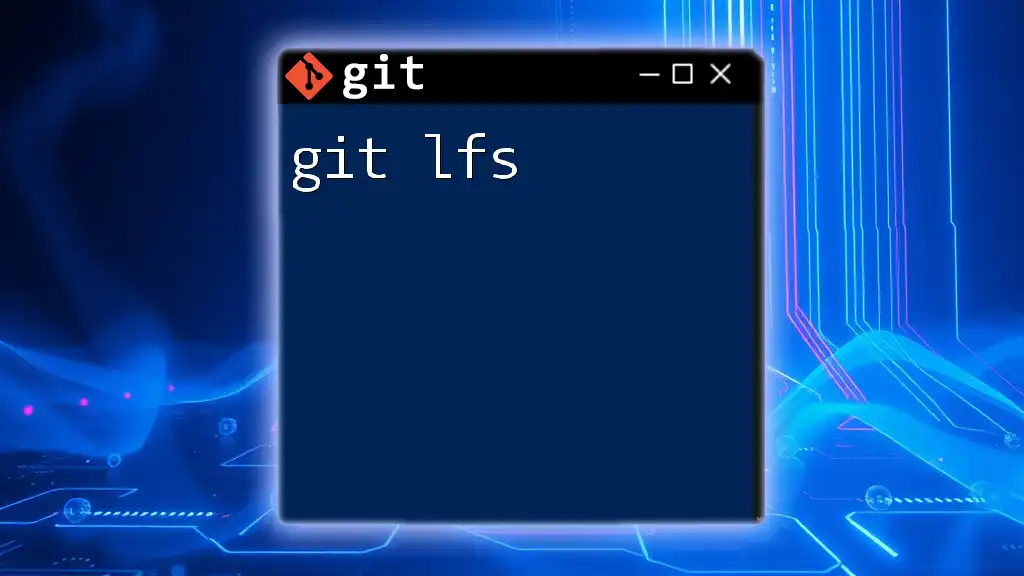Git version 2.45.2 introduces enhancements and bug fixes that streamline version control operations, making it easier for developers to manage their code efficiently.
git --version
What is Git 2.45.2?
Git 2.45.2 is a specific release of the widely-used version control system, Git, which helps developers manage code changes throughout the software development process. This version builds upon previous iterations of Git by incorporating more advanced features, performance enhancements, and various bug fixes that streamline workflows and improve user experience.
Understanding the updates and enhancements in Git 2.45.2 is crucial for developers who aim to leverage version control effectively within their projects.
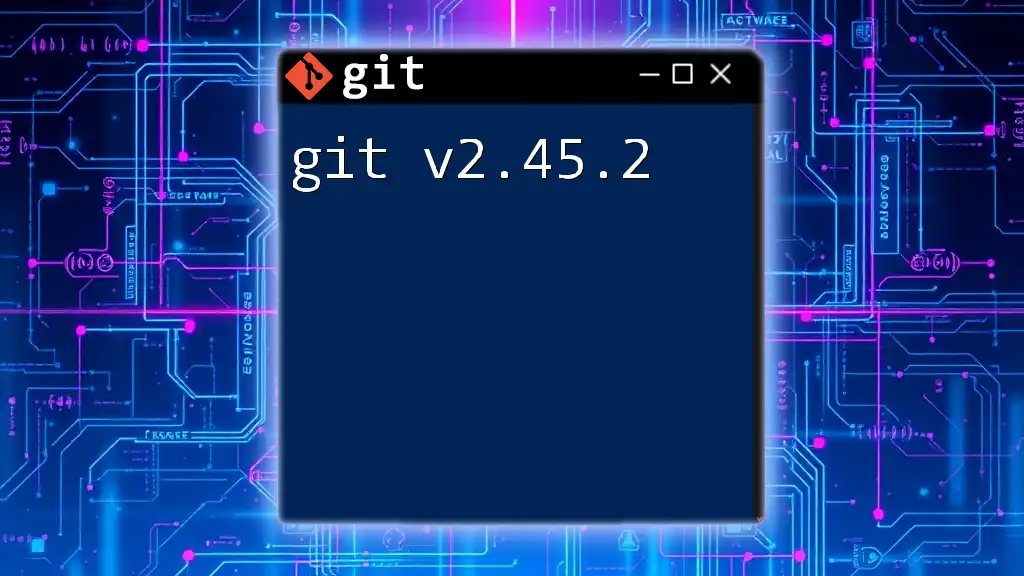
New Features in Git 2.45.2
Enhanced Performance
Git 2.45.2 introduces several performance improvements that allow for faster repository operations. This means quicker clone, fetch, and push operations, particularly in large repositories with considerable history. For example, using shallow cloning can drastically reduce the time it takes to duplicate a large repository:
git clone --depth=1 https://github.com/example/repo.git
This command clones the repository with a history limited to the latest commit, speeding up the process considerably.
Improved Submodule Management
Another notable enhancement in this version is the improved management of submodules. Users can now enjoy a more reliable experience when adding and updating submodules, which are often utilized to include external repositories in a project. For instance, adding a new submodule is as simple as the following command:
git submodule add https://github.com/example/submodule.git
This new functionality simplifies managing complex projects that involve multiple dependencies and separate modules.
Attribution and Commit Messages
With Git 2.45.2, there is a clearer focus on commit message formatting and attribution. Well-structured commit messages are vital for effective collaboration within development teams. A best practice is to provide a concise yet informative summary of changes. For example:
git commit -m "Fix bug in user authentication system"
Doing so not only improves readability but also aids in tracking project history, making it easier for team members to comprehend the rationale behind changes.
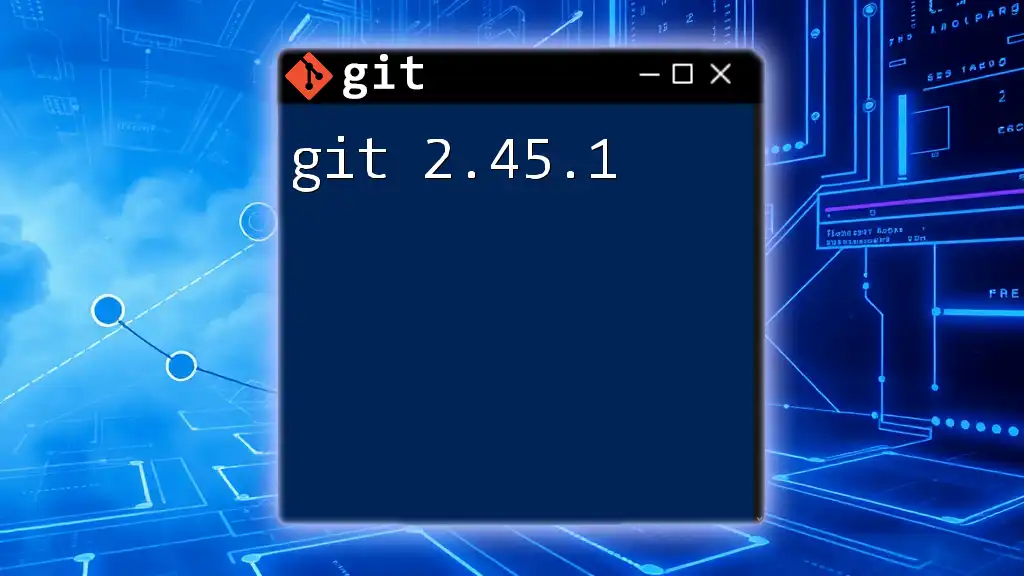
Bug Fixes and Stability Improvements
In addition to new features, Git 2.45.2 has addressed several bugs from earlier versions, significantly enhancing overall system stability. Key bug fixes might include enhancements in the handling of merge conflicts or issues encountered during branch switching.
By resolving these issues, Git 2.45.2 allows developers to focus on coding without facing the interruptions that can arise from unexpected technical difficulties.
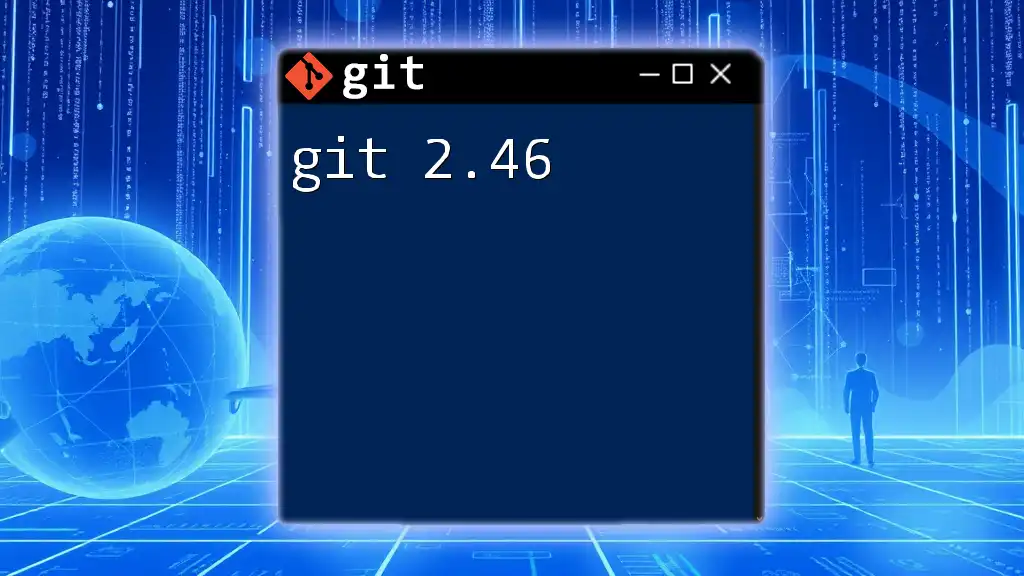
Migration to Git 2.45.2
Requirements for Upgrade
Before upgrading, it's essential to ensure that your system meets the necessary requirements for Git 2.45.2. It is compatible with various operating systems, including Windows, macOS, and Linux.
Upgrade Process
Upgrading to Git 2.45.2 is straightforward, but it requires different commands depending on your operating system:
-
Windows:
winget install Git.Git -v 2.45.2 -
macOS:
brew upgrade git -
Linux:
sudo apt-get install git=2.45.2
Following these commands will upgrade your Git installation and ensure you have access to the latest features and improvements.
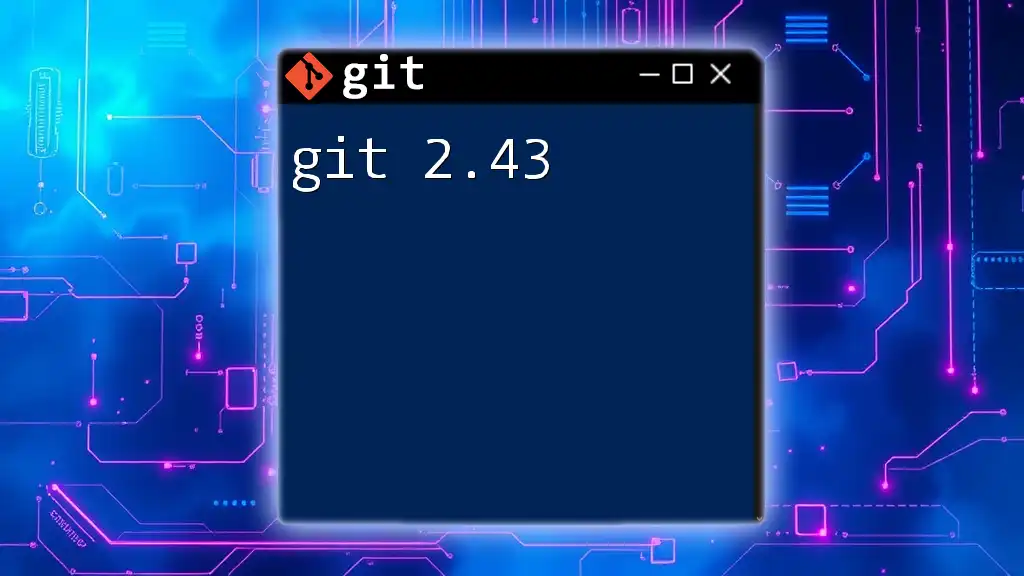
Using Git 2.45.2: Common Commands and Practices
Basic Git Commands
For new users, mastering basic Git commands is essential for version control. Here are a couple of fundamental commands with usage examples:
-
Cloning a repository:
To create a copy of a repository on your local machine, you would use the following command:git clone <repository-url> -
Creating a new branch:
Branching is fundamental for developing features separately from the main code base:git checkout -b new-feature-branch
Advanced Git Commands
As your experience with Git grows, you may find yourself needing to employ advanced commands that allow for more nuanced control over your repositories.
-
Interactive rebase:
Interactive rebasing is a powerful tool for rewriting commit history. It can be particularly useful for cleaning up past commits before merging:git rebase -i HEAD~3 -
Stashing changes:
Stashing is a valuable feature when you need to switch contexts without committing incomplete work. Here’s how to stash your changes:git stash push -m "WIP: changes for feature X"
This command saves your work-in-progress changes, allowing you to focus on another task without losing your progress.
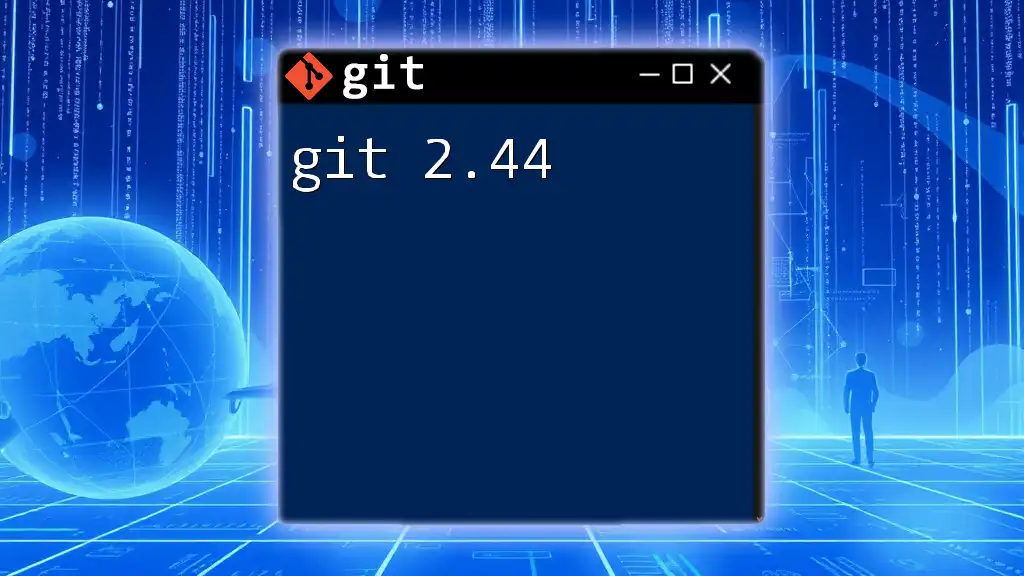
Best Practices for Using Git 2.45.2
Version Control Workflow
Establishing a clear version control workflow is key to collaborative software development. Popular workflows include feature branching and Git Flow. Each workflow has its unique advantages and is tailored for specific team dynamics. For example, Git Flow helps in managing releases systematically.
Collaborating with Teams
Effective collaboration hinges on good practices, such as maintaining consistent commit messages, establishing branch naming conventions, and frequently pushing changes to remote repositories. By adhering to these best practices, teams can avoid confusion and ensure a more cohesive coding experience.
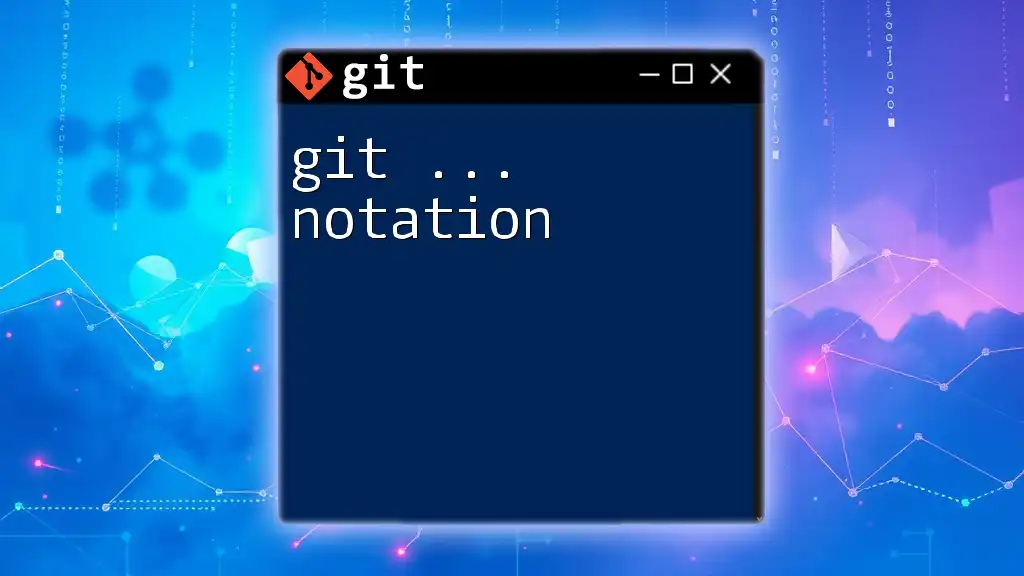
Troubleshooting Common Issues
Common Errors and Solutions
While using Git 2.45.2, developers may encounter common issues that can disrupt their workflow. For instance, if you find yourself facing merge conflicts, it's important to understand how to resolve them:
- Use Git's merge conflict markers to identify the conflicting sections in your code.
- Manually edit these sections, then run:
git add <resolved-file> - Finally, complete the merge by committing your changes.
Also, if you find yourself in a detached HEAD state, you can easily switch back to an existing branch by executing:
git checkout <branch-name>
Resources for Further Help
If you encounter challenges while using Git, there are numerous resources available for assistance. The official Git documentation is a great starting point. Community forums, like Stack Overflow, and various online tutorials also provide valuable insights.
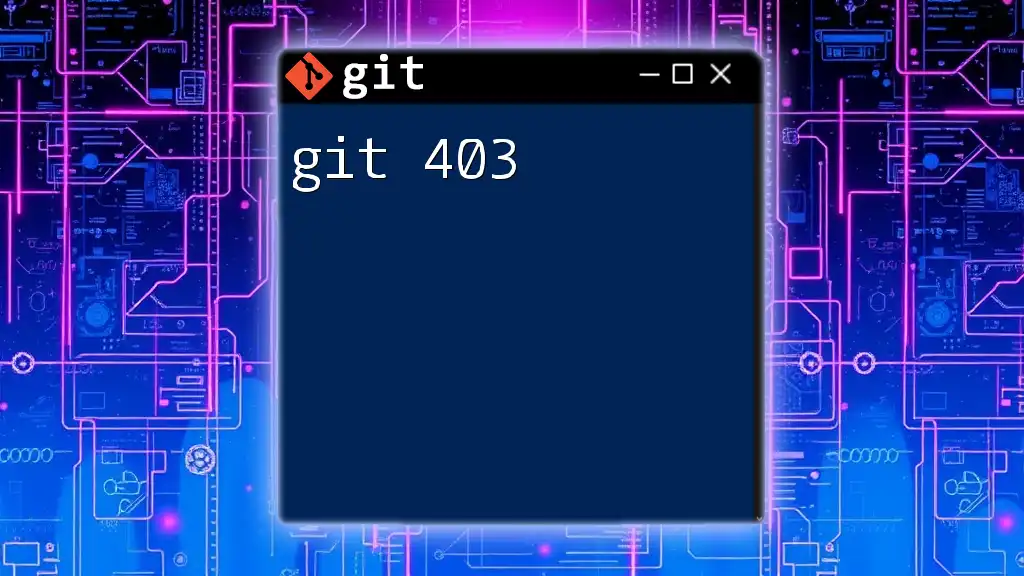
Conclusion
Git 2.45.2 represents a significant step forward in version control capabilities, introducing enhancements that improve performance, stability, and usability. By taking advantage of the new features and adhering to best practices, developers can streamline their workflows and better collaborate with team members. Embrace these improvements, experiment with the latest commands, and continue refining your Git skills for enhanced productivity in your software development journey.
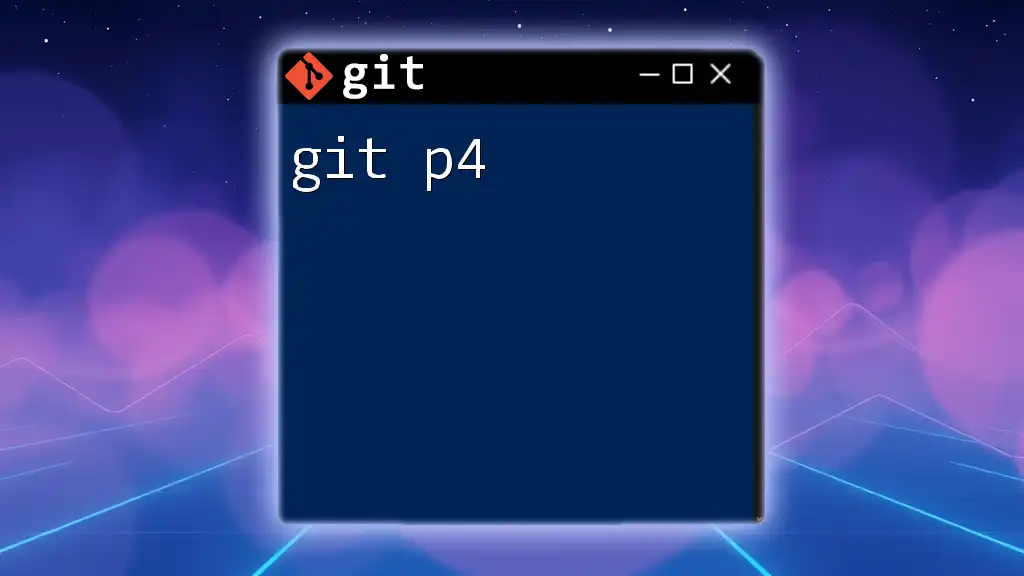
Additional Resources
For more in-depth learning, refer to the official Git documentation, online tutorials, and resources offered by your company as you continue to explore the world of Git and version control in software development.
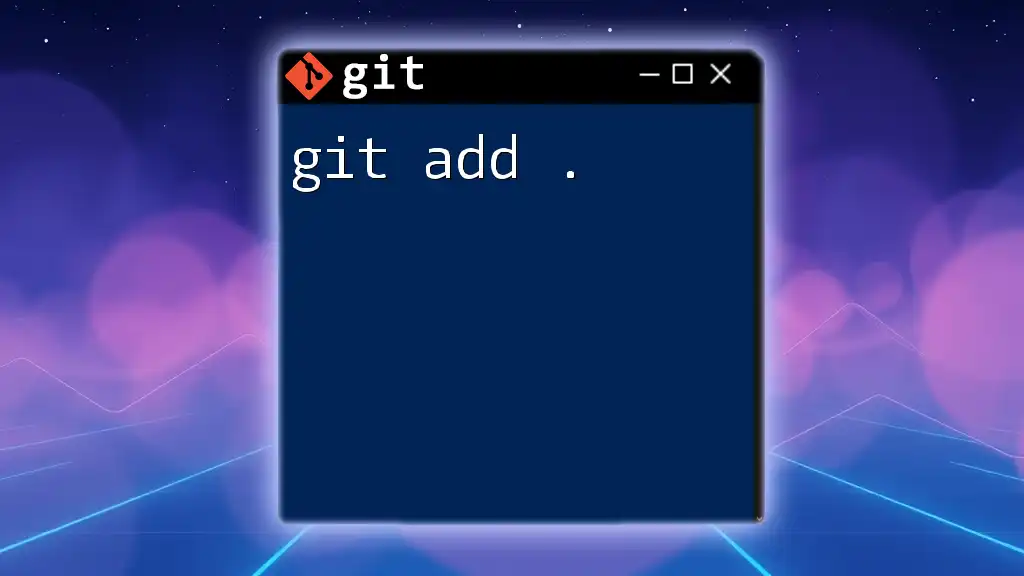
FAQs
What is the difference between Git and GitHub?
While Git is a version control system used to track changes in source code, GitHub is a cloud-based platform that hosts Git repositories, allowing for collaborative development and sharing of projects.
Why should I update to Git 2.45.2?
Updating to Git 2.45.2 ensures that you benefit from the latest features, performance improvements, and security patches, enabling a more efficient and smooth development process.

